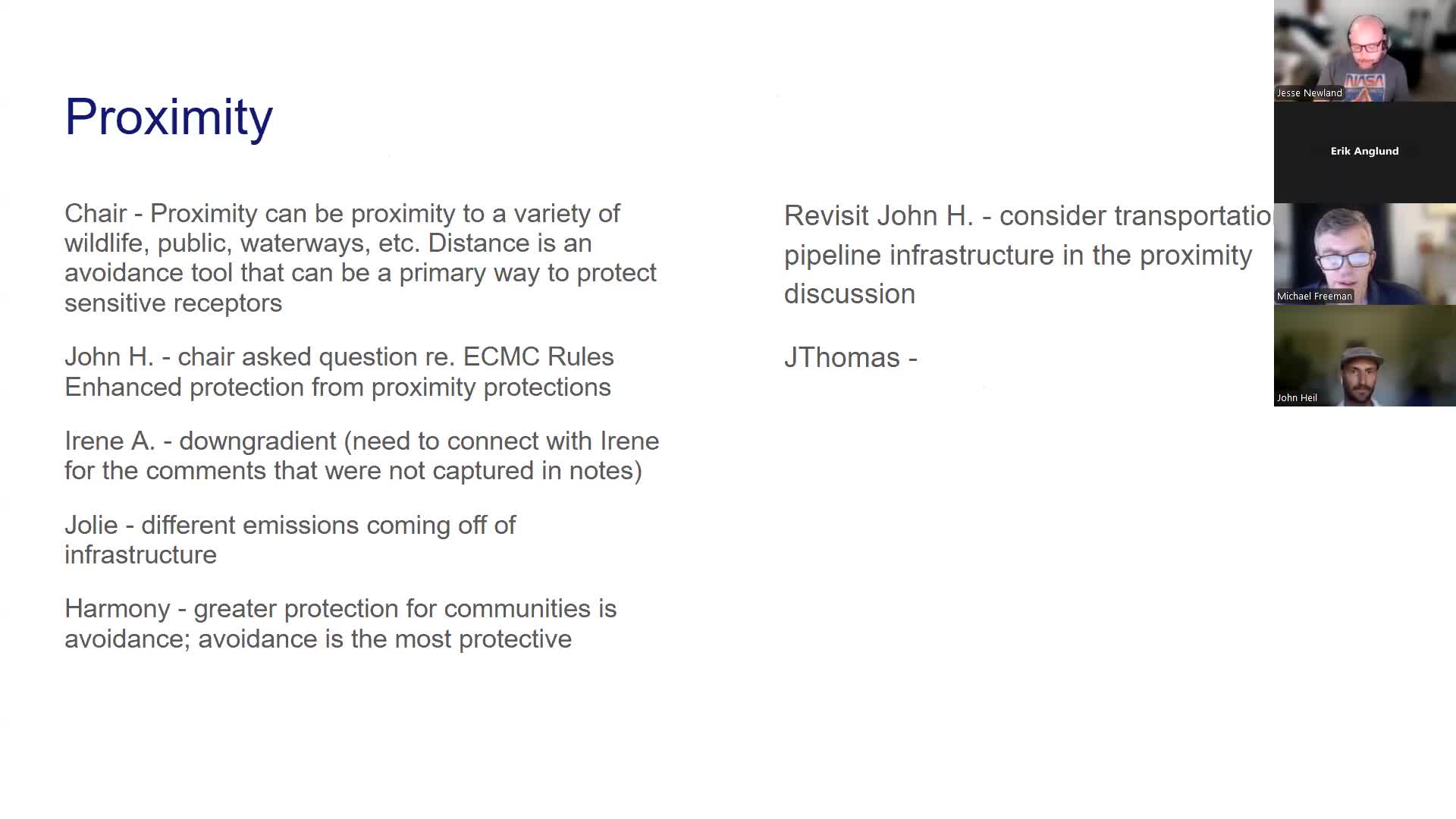Panel Discusses Emission Controls and Facility Design Near Disproportionately Impacted Communities
July 16, 2025 | Department of Personnel & Administration, State Agencies, Organizations, Executive, Colorado
Thanks to Scribe from Workplace AI , all articles about Colorado are free for you to enjoy throughout 2025!

This article was created by AI using a video recording of the meeting. It summarizes the key points discussed, but for full details and context, please refer to the video of the full meeting. Link to Full Meeting
Key discussions emphasized the need for emissions controls to be based on scientific data rather than subjective measures like odor. Participants raised questions about whether the placement of facilities in certain communities is necessary or merely preferred, suggesting that alternative locations should be considered to minimize potential impacts on public health.
A significant contribution came from a study by Professor Jeff Collett, which monitored volatile organic compound (VOC) emissions during various stages of drilling and production near Broomfield, Colorado. The findings indicated that VOC levels can spike during short-term events, underscoring the necessity for pre-establishment monitoring to establish baseline data for air quality.
John Heil, a participant in the meeting, pointed out that emissions regulations primarily fall under the Colorado Department of Public Health and Environment (CDPHE), which may limit the consortium's ability to enforce changes regarding proximity and emissions. He suggested that enhanced emissions capture technologies should be prioritized in disproportionately impacted communities, advocating for a differentiated approach to emissions control.
The meeting also touched on the requirement for alternative location analyses for centralized produced water treatment facilities, which could ensure that facility placements are justified based on necessity rather than convenience. This consideration is particularly relevant for communities that may face greater environmental risks.
Overall, the discussions at the consortium meeting underscored the importance of integrating scientific research into facility design and emissions management, with a focus on protecting public health and addressing community concerns. The consortium plans to continue exploring these issues as they develop guidelines for future operations.
Converted from 2025 July 11 Colorado Produced Water Consortium Meeting meeting on July 16, 2025
Link to Full Meeting
Comments
View full meeting
This article is based on a recent meeting—watch the full video and explore the complete transcript for deeper insights into the discussion.
View full meeting
